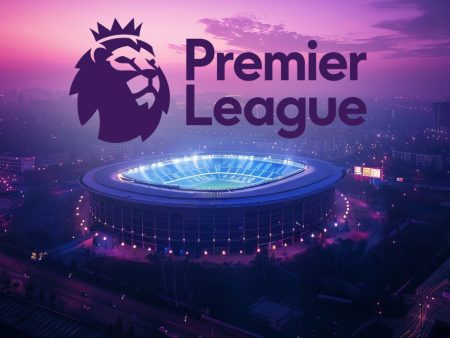
Understanding Premier League Club TV Rights and the Impact on Club Revenue and Prize Money for 2022-23 season
The Premier League is one of the most popular football leagues in the world, with a massive global following. There are some of the most prestige football clubs as Manchester city, Liverpool, Manchester united, Southampton, Chelsea, Leicester, Arsenal and Newcastle. The league’s success can be partly attributed to its lucrative TV rights deals. In this article, we will explore the intricacies of Premier League club TV rights and their impact on club revenue and prize money.
Now, let’s find out more details about the Premier league season.
Premier League TV Rights: Explained
Before diving into the details, let’s first understand how Premier League TV rights are distributed. TV rights refer to the broadcasting rights granted to broadcasters to air Premier League matches. These rights are typically sold through competitive bidding processes, with broadcasters paying hefty sums to secure the rights to broadcast matches live.
Each Premier League club receives a share of the TV revenues. The distribution is based on various factors, including the number of times a club’s matches are televised, the club’s finishing position in the league, and the number of supporters they have worldwide. The aim is to ensure a fair and equitable distribution of TV revenues among all participating clubs.
The Importance of Broadcasting Rights in Premier League Revenue
Broadcasting rights play a pivotal role in the revenue generation of Premier League clubs. The TV money received by clubs forms a significant portion of their overall revenue. In fact, for some clubs, TV revenues constitute the largest chunk of their income. Premier League clubs earn money from broadcasting rights in several ways. Firstly, they receive a fixed sum of TV revenue known as the equal share. Each club receives an equal portion of this revenue, regardless of their finishing position in the league.
In addition to the equal share, clubs also earn money through merit payments and facility fees. The merit payment is a performance-based bonus, where clubs earn more money for finishing higher up in the league table. Facility fees, on the other hand, are paid to clubs when their matches are selected for live television coverage. Compared to other revenue streams such as matchday income and commercial deals, the Premier League TV money is significant. The TV rights deals bring in billions of pounds annually, making it a vital source of income for clubs.
The Impact of TV Rights on Prize Money in the Premier League
The Premier League TV money not only affects club revenue but also has a direct impact on the prize money distributed among clubs at the end of each season. The prize money is awarded to clubs based on their final position in the league table. Several factors determine the Premier League prize money distribution. These include the size of the broadcasting rights deal, the international TV rights income, and the UEFA coefficient ranking.
The higher a club finishes in the league, the more prize money they receive. At the end of each season, the winners of the Premier League receive the highest share of the prize money, followed by the runners-up and the top four finishers who qualify for the UEFA Champions League. The remaining positions in the league receive decreasing amounts of prize money, with the lowest-placed club receiving the least amount.
Parachute Payments: How They Affect Club Finances
In addition to the regular TV rights payments, the Premier League employs a system called “parachute payments” to support clubs that are relegated from the top flight. Parachute payments aim to ease the financial burden of relegation and help clubs adjust to the lower revenue streams of the English Football League (EFL). Parachute payments are substantial sums of money paid to clubs over a set period after relegation.
The payments are intended to provide financial stability and enable clubs to retain key players and staff. This helps clubs maintain their competitiveness as they aim to secure promotion back to the Premier League. Not all clubs receive parachute payments. Only those clubs that have spent time in the Premier League and qualify for the payments based on certain criteria are eligible. Clubs can receive parachute payments for a maximum of three seasons, with the amount gradually decreasing each year.
Overseas TV Rights: Expanding the Premier League’s Global Reach
Another significant aspect of Premier League TV rights is the sale and distribution of overseas TV rights. The Premier League has a massive international following, and overseas TV rights contribute significantly to the league’s revenue. The Premier League benefits from overseas TV rights in several ways. Firstly, the sale of these rights brings in substantial amounts of money, as broadcasters around the world compete for the rights to air Premier League matches in their respective countries. This revenue is then distributed among the clubs. The overseas TV rights are sold through a similar competitive bidding process as the domestic TV rights.
This ensures that the Premier League maximizes its revenue potential from international markets. The revenue generated from these rights helps clubs strengthen their squads, invest in infrastructure, and increase their global presence. In conclusion, Premier League club TV rights have a significant impact on club revenue and prize money. The distribution of TV revenues, the importance of broadcasting rights, the influence on prize money, the impact of parachute payments, and the expansion through overseas TV rights all contribute to the financial prowess and global reach of the Premier League and its member clubs.
How Is Premier League Revenue Distribution
The Premier League is one of the most lucrative sports leagues in the world, generating billions of dollars in revenue each year. But how is this revenue distributed? This article explores how Premier League revenue is divided, from broadcasting rights and merit payments to commercial revenue and facility fees.
We’ll also look at financial fair play regulations, central fund payments and solidarity payments, and how all of these elements contribute to the overall revenue picture. With all of these components in mind, we can get an understanding of the complex and fascinating world of Premier League revenue distribution.
Overview of the Premier League Revenue Model
You may be familiar with the Premier League’s revenue model, but it’s worth taking a closer look to understand how it works. The Premier League is the most lucrative soccer league in the world and generates an impressive amount of revenue each season. This revenue is then distributed among the league’s 20 clubs. The revenue is generated from broadcasting rights, commercial activities, and matchday revenue.
Broadcasting rights account for the majority of revenue, with each club receiving a share of the total. The commercial activities include sponsorship deals, merchandising, and digital rights. Lastly, matchday revenue is generated from ticket sales, hospitality, and other matchday activities. In summary, the Premier League revenue model is based on a combination of broadcasting, commercial, and matchday revenue, and is distributed among the league’s 20 clubs.
Broadcasting Rights and Merit Payments
You’re probably wondering how the money from the top-tier soccer competition is divided up. Broadcasting rights and merit payments play a large role in that. The Premier League sells the rights to broadcast its matches to television companies around the world. The payments can range from hundreds of millions to billions of pounds. In addition, each team receives a merit payment based on their final league position.
This payment is distributed equally, with the team at the top receiving the most money. The teams at lower positions receive proportionately less money. These merit payments are used to improve the team’s playing and training facilities, and to help develop local talent. Clubs also receive a share of the overall broadcasting revenue, which is distributed based on their final league position. All of this money helps to ensure that the Premier League remains one of the most competitive soccer leagues in the world.
Commercial Revenue and Facility Fees
In addition to broadcasting rights and merit payments, teams in the top-tier soccer competition also benefit from commercial revenue and facility fees. Commercial revenue includes sponsorships, advertising, and merchandising, and is divided among the teams based on their global popularity. Facility fees are paid to the teams hosting matches, and the amount of money received depends on the size of the stadium and the number of spectators.
These fees have increased significantly in recent years, allowing smaller clubs to benefit more and remain competitive. For example, clubs in the lower divisions now receive a share of the commercial revenue and facility fees that were previously limited to the top-flight teams. This has helped to improve the overall competitiveness of the Premier League.
Central Fund Payments and Solidarity Payments
With the implementation of central fund payments and solidarity payments, clubs in the lower divisions now receive a share of the wealth previously only available to the top teams. Central fund payments are allocated to the Premier League clubs based on their individual standings in the league table, with the top teams receiving the most.
This money is then redistributed to the lower divisions, with the Championship, League One and League Two each receiving a certain percentage. Solidarity payments form part of the central fund payments and are based on the number of Premier League clubs that have been promoted to the Football League. These payments are designed to help the lower divisions remain competitive. Both payments are helping to even out the distribution of wealth in the Premier League, which is beneficial for all clubs involved.
Financial Fair Play Regulations
Financial Fair Play Regulations have been put in place to ensure teams don’t spend more than they earn, keeping things fair and competitive across the board. The rules, introduced by UEFA in 2011, require clubs to balance their spending with revenue generated. This means clubs must break even over a three-year period, or face sanctions such as financial penalties, transfer restrictions, or even expulsion from European competition.
The regulations also put a limit on the wages clubs can pay, which prevents them from spending more than a certain percentage of their total revenue on player wages. This helps to ensure that teams are competing on a level playing field and that Premier League revenue is distributed fairly.
Conclusion of How is Premier League Revenue Distribution
The Premier League revenue model is a complex one, with broadcasting rights, commercial revenue, facility fees, central fund payments, and solidarity payments all playing a role in the distribution of revenue. Financial Fair Play regulations also help to ensure that teams are playing fair in terms of their spending. Overall, the Premier League provides a fair and sustainable revenue model that allows teams to remain competitive while also protecting the financial health of the league.









